EMPLOYMENT IN THE MARKET ECONOMY IN ... - Eurostat - Europa
EMPLOYMENT IN THE MARKET ECONOMY IN ... - Eurostat - Europa
EMPLOYMENT IN THE MARKET ECONOMY IN ... - Eurostat - Europa
You also want an ePaper? Increase the reach of your titles
YUMPU automatically turns print PDFs into web optimized ePapers that Google loves.
Chapter 4 — Employment and wages in industry by region<br />
tion), as well as in Nyugat-Dunántúl in the west of Hungary,<br />
Pomorskie in northern Poland and Bratislavsky in<br />
Slovakia (some 2% of working-age population in each<br />
case).<br />
Regional wage variations<br />
The main purpose here is to examine variations in average<br />
wages across NUTS 2 regions within countries.<br />
It begins, however, by indicating the extent of variation<br />
between countries in order to put regional variations<br />
into perspective The regional analysis covers only the<br />
countries which are large enough to have NUTS 2 regions.<br />
It, therefore, excludes Luxembourg and Denmark,<br />
which are both NUTS 2 regions in themselves,<br />
as well as the three Baltic States, Slovenia and Cyprus<br />
and Malta. It also excludes the Czech Republic, where<br />
no data are available, and much of Portugal and Finland,<br />
where the same applies because of a recent<br />
change in regional boundaries. There are, in addition,<br />
a few regions in other countries where there are no<br />
data for the sectors examined because of confidentiality<br />
reasons.<br />
Average wages in the selected sectors vary markedly<br />
between countries, even if the new Member States are<br />
not taken into account, In textiles and clothing, they<br />
vary from 38 thousand euros per employee a year in<br />
Luxembourg and 31 thousand euros in Denmark to 13<br />
thousand euros in Spain and only 7 thousand euros in<br />
Portugal (Graph 31). (It should be emphasised once<br />
more that these comparisons take no account of differences<br />
in price levels which affect the real value of<br />
wages. This is particularly relevant for comparisons<br />
between EU15 countries and the new Member States,<br />
since wages in euro terms greatly understate the relative<br />
level of real wages in the latter. It also affects comparisons<br />
between the UK and the other EU15<br />
countries, since in the UK the exchange rate against<br />
the euro was unusually high in 2001, so increasing<br />
wages expressed in euros.)<br />
The extent of the variation in basic metals is much the<br />
same, with wages being significantly higher than in textiles<br />
and clothing in all Member States. A similar difference<br />
between wages in the two sectors is evident in the<br />
new Member States. Cyprus, Malta and Slovenia apart,<br />
however, the extent of the difference between countries is<br />
narrower(Graph 31).<br />
The regional data on average wages<br />
The SBS contain data for only a limited number of variables<br />
at regional level. While there are data for wages<br />
and salaries and for the total number employed in the different<br />
NACE activities, there are no data for the number<br />
of employees. This means that it is not possible to calculate<br />
the average wage per employee. Although the number<br />
of self-employed are relatively small in most<br />
countries in the industries selected for analysis, they are<br />
sufficiently large in a few to distort comparisons between<br />
countries. The data presented here, therefore, are based<br />
on an estimate of the number of employees. The approach<br />
adopted is to calculate the ratio of the employees<br />
to total employed in each of the selected sectors at national<br />
level and to apply this ratio to the regional data for<br />
employees. This effectively assumes, therefore, that the<br />
relative number of self-employed is the same in each region,<br />
which may not be the case but it is unlikely to distort<br />
the results significantly.<br />
Differences in wages between the three engineering sectors<br />
are much less, though much the same extent of variation<br />
between countries is evident, if with some change in<br />
their rank order. Germany, in particular, has higher relative<br />
wage levels in these sectors than in the more basic<br />
manufacturing sectors (Graph 32). In contrast to the<br />
EU15 countries, the rank order of the new Member States<br />
does not change. However, in the same way as in most of<br />
the EU15, wage levels in engineering are very similar to<br />
those in basic metals in all these countries. In both Bulgaria<br />
and Romania, however, wages are substantially<br />
higher in basic metals than in engineering, which is also<br />
the case in Belgium, the Netherlands and Austria.<br />
Average wages in all of these sectors vary significantly<br />
across regions relative to the national average in the sector<br />
concerned (see Maps). In order to interpret these variations,<br />
however, they need to be looked at in relation to<br />
the scale of employment in the different regions. A high or<br />
low average wage might, therefore, be a result of the sector<br />
being comparatively small in the region in question<br />
and so unrepresentative of the composition and nature of<br />
employment in other regions. The commentary below on<br />
each of the sectors focuses on differences in wage levels<br />
between regions where the sector concerned employs a<br />
significant number of people relative to working-age population.<br />
Even taking account of differences in numbers<br />
employed, there are wide regional variations in average<br />
wages in particular sectors.<br />
63



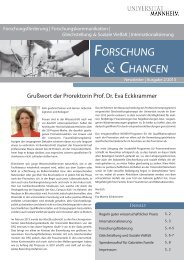
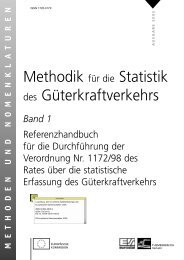

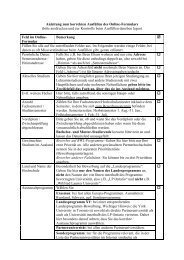


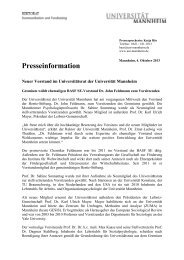


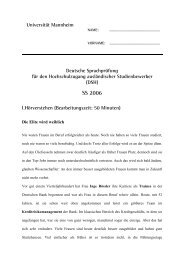
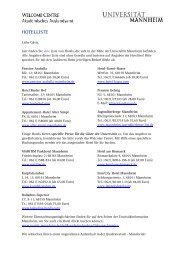
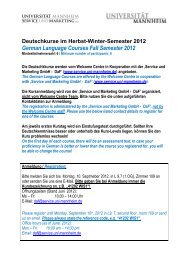
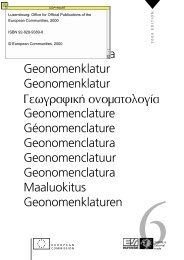
![226. [Augsburg], 27. Oktober 1562 An Joachim Camerarius d. Ã ...](https://img.yumpu.com/27559109/1/184x260/226-augsburg-27-oktober-1562-an-joachim-camerarius-d-a-.jpg?quality=85)